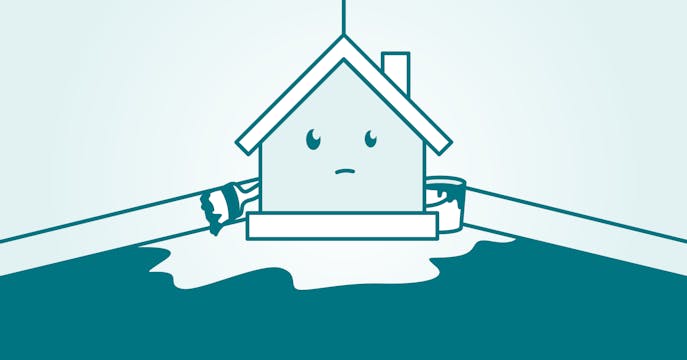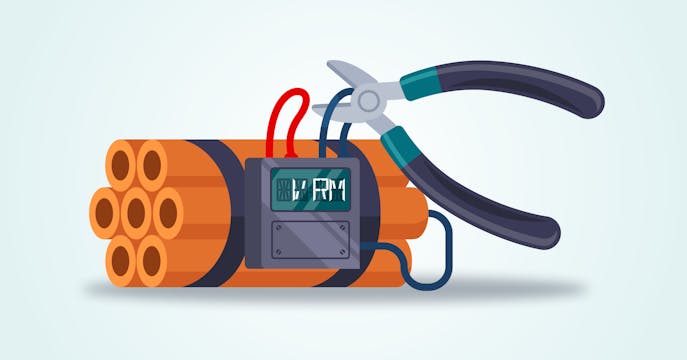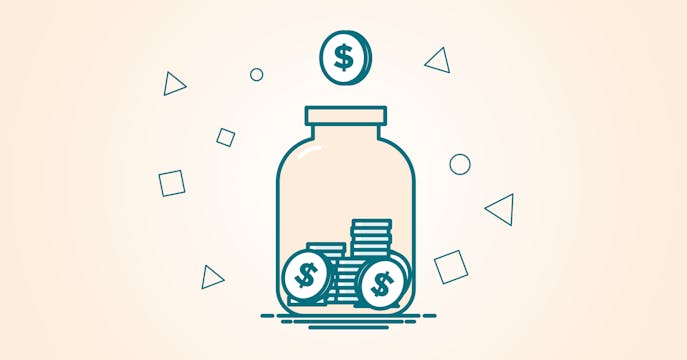What is a mortgage amortization? It's the set period of time it takes you to fully pay off your mortgage. Standard amortization for an insured mortgage is 25 years. (As you pay down your mortgage, your AM reduces accordingly.)
Extending your AM at renewal could mean stretching your mortgage principal back to your original AM or for longer, depending on your details.
Lowest Mortgage Rate in Canada. Starting from 1.99%
Should you stretch your mortgage at renewal?
If you're worried about your mortgage payment, you're not alone.
Extending your amortization can help you pay less per month (but over more time). It may offer you the budget lifeline you need right now — here's when it makes sense to go long.
Updated October 17, 2024
Stretch it out to lower your payment.
If your renewal is coming up, you're probably smacking right into a higher rate than what you had.
Of course, getting a great rate is an important way to save. But extending the amortization (AM) on a mortgage to beat higher rates for a lower payment is an increasingly popular renewal trend.
Here's how it works.
When does a lender allow you to extend your AM?
It all depends on whether your mortgage is insured, insurable, or uninsured — and how far you are into paying down your loan balance.
You'll also need to make your choice based on the mortgage rate that comes with it.
Is your mortgage still insured? You may not want to extend your AM.
If you had a down payment of less than 20% of your (less than) $1M home price, your mortgage required default insurance. You paid an insurance premium but likely got a lower rate because your mortgage was insured.
Fast forward to your current renewal. Whether you've paid off 5, 10, or 15 years — your mortgage may still be registered as insured if you've never refinanced.
Why is that important? Because you can still access a lower insured rate (uninsured rates are always higher). Extending your amortization requires a refinance, which would wipe out that access. That better rate may allow you enough budget ease to keep your AM on track.
According to long-time True North Mortgage broker Pawandeep Singh, many of his renewal clients are unaware of this insured-rate possibility, and their bank certainly isn't letting on.
"Even if you're on your second or third term," he says, "your mortgage may still be listed with an insurer. Just yesterday, a client called about their renewal. I asked a few questions, made a few calls, and there it was — still insured. I was able to switch them to a much lower insured rate through our in-house lender, THINK Financial. I also passed along a rate discount, and we were both delighted with their budget savings."
An insurable mortgage may let you extend to 25 years.
If you have an insured mortgage, but are willing to go to a slightly higher ‘insurable’ rate, you may be able to extend your AM up to 25 years (depending on whether your mortgage is a standard or collateral charge).
This scenario would make sense if you're at your second or third renewal (assuming standard 5-year terms), where the extra-years extension may substantially lower your monthly mortgage payment despite a slight bump-up in rate.
If your mortgage was uninsured (20% or more down payment), Pawandeep suggests that "it may still be insurable, allowing you access to slightly lower rates and an extension to 25 years."
An uninsured mortgage may let you extend to 30 years.
If your mortgage is considered uninsured by a lender – you're automatically in a higher rate category. But now, you can spread your payments over 30 years or more, depending on the lender, through a refinance (you'll need to requalify for your mortgage).
Here's an example of what that payment room might look like:
On a $500K mortgage, with 20 years left (25 years originally) and a 4.99% 5-year uninsured mortgage rate — your monthly payment would be about $3,282. Stretch that out to 30 years, and your payment is $2,665. That’s over $600 less per month.
Note: For illustrative purposes only. Talk to a True North expert broker for your specific details.
It does mean you'll pay more interest costs over the long term if you keep the 30-year mark. But many who take advantage of an extended AM look to catch up later when interest rates (and inflation) finally go lower.
"The bottom line," says Pawandeep, "is that clients are concerned about the here and now. They want that breathing room in their budget to cope with higher prices all around."
Can you get an AM longer than 30 years?
If you have a mortgage with at least 20% of home equity, a True North expert broker may be able to find you an alternative lender that offers 35 years (even 40 years or more isn't unheard of). You'll pay a higher rate for the privilege, but the (extended) extension may lower payments for the monthly space you need.
Want to extend your AM, but aren't up for renewal?
You can look into whether breaking your mortgage term early makes money sense, as it may incur a pre-payment penalty.
A fixed-rate mortgage typically has a higher penalty compared to a variable rate — with an Interest Rate Differential (IRD) calculation vs 3-months interest.
However, it may still be worth having a lower monthly payment sooner.
What's not a stretch? Saving more with us.
Our expert brokers have deep experience with area markets, access to several lenders and products, and the ability to pass along rate discounts that can make a big difference in your best mortgage solution, whether your details are straightforward or more complex.
Pawandeep has been going the extra mile to help his clients save money — for years. "We ask the right questions and put in the extra work," he says (with a smile). "It gives us an edge on behalf of our clients, for sure."
Anywhere you are in Canada, get expert mortgage advice and your best rate — online, over the phone, or at a store near you. We make it easy. Apply with us today!
Expand your options to get a lower payment.
So much mortgage help

Worried about your renewal?
Higher rates painting you into a budget corner? Get help to find a way out.

Is your mortgage a ticking time bomb?
Hear something ticking? Take a moment (with us) to assess your mortgage needs.

All the ways to save on your mortgage.
Here are 12 great tips to help calm your (mortgage) budget woes.

